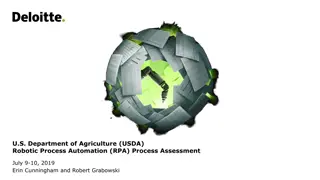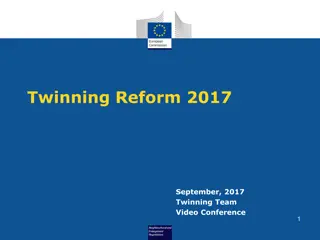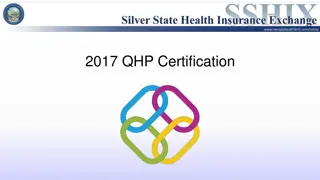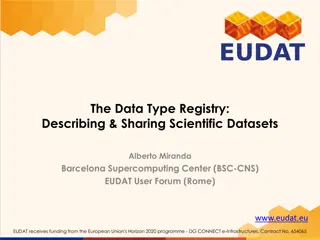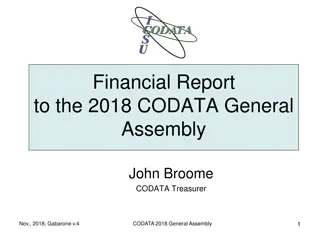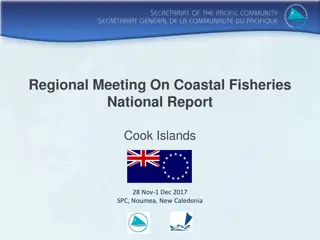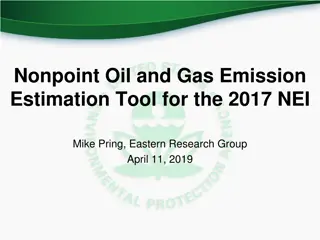
Optum DTR Process Overview and UHG Tuning Efforts
Discover the foundation of UHG's successful tuning efforts through the Detailed Tuning Recommendation (DTR) process. Learn how key participants work together to optimize business performance and achieve exceptional results with a focus on efficiency and accountability.
Download Presentation

Please find below an Image/Link to download the presentation.
The content on the website is provided AS IS for your information and personal use only. It may not be sold, licensed, or shared on other websites without obtaining consent from the author. If you encounter any issues during the download, it is possible that the publisher has removed the file from their server.
You are allowed to download the files provided on this website for personal or commercial use, subject to the condition that they are used lawfully. All files are the property of their respective owners.
The content on the website is provided AS IS for your information and personal use only. It may not be sold, licensed, or shared on other websites without obtaining consent from the author.
E N D
Presentation Transcript
Agenda UHG Application Tuning DTR: The Foundation of UHG Tuning Efforts Key Participants DTR Lifecycle UHG Results The Secret Sauce Areas of Ongoing Focus Questions/Discussion Propriety and Confidential. Do not distribute.
UHG Application Tuning Program Business demand and transaction volumes grew with no end in sight Two Choices: 1. Throw ever-increasing amounts of hardware at the problem, often to no avail 2. Tune high-value, high ROI consumers In 2004 UHG chose the latter, and from this decision the DTR program/partnership was developed. Propriety and Confidential. Do not distribute.
DTR: The Foundation of UHG Tuning Efforts In response to corporate mandate to control CPU consumption, a process was developed by which tuning actions could be created, reviewed, tested and implemented. The Detailed Tuning Recommendation (DTR) program was the output from this exercise. A DTR is a tuning recommendation created for application jobs, transactions, SQL, or system resources for the purposes of: Reducing Business Chargeback Improving Response Time Improving Cycle Time (Batch Throughput) Reducing Abends/Contentions Decreasing system overhead and/or peak hour demand Summarized: Improve efficiency of UHG assets Standardized format makes for easier processing DTRs are intentionally detailed for the purpose of providing clarity for the recommended change so as to minimize the amount of discovery work needed by the application team The process also includes a reporting database (compiling DTR savings & costs) containing all DTRs for current year as they progress through the DTR life cycle. Every DTR is assigned a unique serial number so its progress can be tracked. Propriety and Confidential. Do not distribute.
Key Participants APM Team (Tuner): Identifies the tuning opportunity Writes the DTR (Detailed Tuning Recommendation) Supports the Application team throughout development lifecycle Application Team: Validate the recommendation If funding is needed, estimate the work and gain approvals Complete any additional analysis needed to confirm scope/impacted components Complete necessary build/development activity Complete necessary testing Schedule and execute implementation activities DTR Administrator: Maintains inventory of all DTRs Tracks DTRs throughout lifecycle Measures and publishes tuning results Creates scorecards for aggregated results Other Contributors: System teams (CICS, DBA, Capacity Management, etc.): Identify hotspots or areas of interest Business teams: Communicate SLA issues and/or areas of growth Problem Management: Issues that require performance attention Propriety and Confidential. Do not distribute.
DTR Process Workflow Identify Opportunity and Create Tuning Recommendation Application Implementation Measurement Publish Results Opportunities are identified in several ways: Application team has a performance issue where tuning expertise is needed Problem identified as a result of a Production Incident Instrumentation/exception reporting identifies a situation where tuning could address consumption or performance Create Tuning Recommendation: APM team creates Detailed Tuning Request (DTR) that outlines suggested changes that will address opportunity Propriety and Confidential. Do not distribute.
DTR Process Workflow Identify Opportunity and Create Tuning Recommendation Application Implementation Measurement Publish Results Application Implementation: DTR information is forwarded to the Application Service Manager Application Team: Assesses DTR for effort and timing Request funding if needed (ROI is a significant factor in decision to fund) Keep DTR Administrator updated on progress Schedule and implement DTR Confirm implementation Propriety and Confidential. Do not distribute.
DTR Process Workflow Identify Opportunity and Create Tuning Recommendation Application Implementation Publish Results Measurement Measurement: DTR Administrator gather performance metrics across a standard measuring period following implementation (usually two weeks). Propriety and Confidential. Do not distribute.
DTR Process Workflow Identify Opportunity and Create Tuning Recommendation Application Implementation Measurement Publish Results Publish Results: DTR Administrator team notifies to interested stakeholders with the results of the DTR and updates annualized totals Propriety and Confidential. Do not distribute.
UHG Tuning Results Executive View Chargeback savings roll-up with breakout by: DTR Phase Area/type of savings Tuning results reflect: Traditional success in tuning DB2 usage Active work to manage DB size through purging, archiving, etc. Distributed-related chargeback for storage and memory Propriety and Confidential. Do not distribute.
UHG Tuning Results Application View Ability to report results by Application Propriety and Confidential. Do not distribute.
UHG Tuning Results Inception to Date Since inception of DTR program in 2004, over 1900 DTRs have been implemented with cumulative compounded CPU savings of +56 million CPU hours. We would require double the current amount of mainframe capacity without the DTR program. Propriety and Confidential. Do not distribute.
The Secret Sauce Enterprise Support for program: Proven results Partnership with Application, Systems and Business teams to identify and implement changes Funding: Common pool of funding established to remove no money to tune barrier from the application teams while maintaining centralized control and visibility into where tuning efforts are directed. Business willingly funds because they receive 17:1 ROI for $1 spent on tuning their chargeback bill is reduced by $17 (average ROI 2004-2017) Lightweight Process APM vs. Application roles: The APM team makes a recommendation; the Application team maintains ultimate ownership of their code Defensible measurements with supporting documentation The APM Team: Singularly focused on Application performance Consolidated into one team, shared learning and information Highly skilled former developers with deep system and operations knowledge Flexible not dedicated to a single app; can run to the fire Propriety and Confidential. Do not distribute.
Areas of Ongoing Focus Aging DTRs: As inventory ages, recommendations run risk of becoming obsolete Improving internal processes to keep inventory fresh and relevant Improved Predictability of Outcomes Ensuring All Tuning is Captured via DTR If no DTR then the savings did not happen Non-Chargeback Metrics Most current aggregated reporting is mainframe and chargeback-based (CPU or Storage) Opportunities exist to improve how we produce and report aggregated results for: Abend/contention reduction Response time improvements Distributed environmental measurements Improved/Common Access to DTR Information Enhanced partnership with Application teams: Performance assessment/tuning earlier in SDLC Business Logic Propriety and Confidential. Do not distribute.
Questions/Discussion Propriety and Confidential. Do not distribute.




